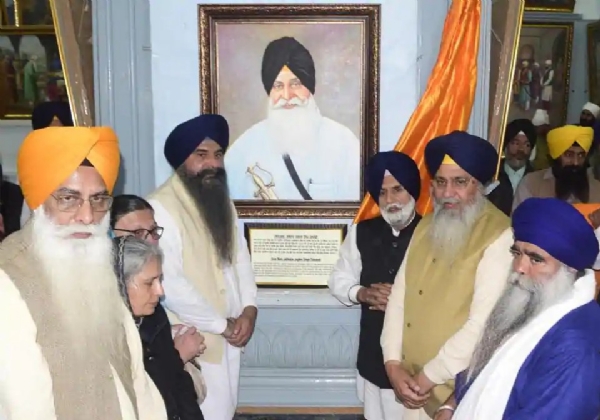War heroes, separatists, Khalistanis' portraits displayed on the same wall in Golden temple
Established in 1958, it is housed on the first floor of the halls situated along the parikrama of the Golden Temple. It is divided into different sections based on Sikh history, with each housing artifacts from the corresponding period.
Total Views |
Amritsar, Jun 18: From Sikh militants to war heroes and freedom fighters, all share space on the walls of the Central Sikh Museum in the Golden Temple here, which for over six decades now has been a big attraction for devotees and lovers of the Sikh history.

Established in 1958, it is housed on the first floor of the halls situated along the parikrama of the Golden Temple. It is divided into different sections based on Sikh history, with each housing artifacts from the corresponding period.
The museum grabbed the headlines after the portrait of former Punjab chief minister Beant Singh’s assassin Dilawar Singh was unveiled here on Tuesday. In the portrait’s caption, Dilawar Singh — a cop who joined the militant outfit Babbar Khalsa International and became a suicide bomber to assassinate the CM on August 31, 1995 — has been described as the one “who attained martyrdom while putting an end to the state atrocities”. The blast at the secretariat complex in Chandigarh had also claimed 16 other lives. SGPC president Harjinder Singh Dhami had said, “Dilawar Singh had put an end to the atrocities and gross human rights violations committed against the Sikhs. The decision of sacrificing self is not possible without the Guru’s blessings and whenever atrocities were committed on the community, Sikhs have always made history by making sacrifices.” The museum’s collection is enriched by many old manuscripts, including the one with the signature of Guru Hargobind in the form of ‘mool mantra.’ It also houses the wood comb of Sri Guru Gobind Singh, kamar kasa (a cloth to tie around the waist), gatra (sword belt), dumala’s chakar (turban ring) of Baba Deep Singh, sword of Bhai Mehtab Singh which he used to behead Massa Rangarh, sword of Maharaja Ranjit Singh’s kamar kasa which he used during the battle of Kasur, other historical arms, small portraits, coins used during the Sikh rule, and the old instruments of gurmat sangeet.
Tear gas shells used by the Punjab police against the Akalis during Punjabi Suba Movement in 1955 inside the shrine complex are also on display, besides long guns used by the Sikh warriors in old times. The painting on display that depicts the glorious Sikh history, are created by eminent artists, including Sobha Singh, Kirpal Singh, Master Gurdit Singh, Thakur Singh, Bodh Raj, Amar Singh, and Mehar Singh. According to Golden Temple manager Sulakhan Singh Bhangali, there are as many as 700 portraits in the museum.

